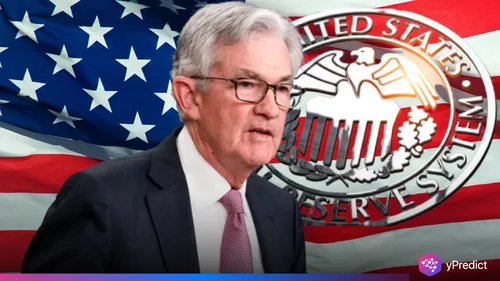
The UK economy is finding itself embroiled in a perfect storm. High inflation is triggering added pressure on a weak economy, alongside ever-changing political requirements and a delicate housing market and these factors are all pushing the UK closer to economic oblivion. However, as the gloom unfolds, there is still one popular asset class of investors’ attention for all the right reasons: government bonds.
Confidence in GDP growth is being slowly trimmed back, and whilst the Bank of England, cuts or not, is caught in sticky inflation, there is a well-needed element of safety amidst the haze of uncertainty. Despite the wider market uncertainty, which area is fresh and now providing yields that look more appealing than risky assets or seriously overvalued equities? Long-term government bonds (gilts) are becoming a good bet that satisfy investors currently.
Investors Shift to Safety as the UK Economy Shows Cracks
New economic indicators raise concern. GDP growth is relatively weak, inflation remains stubborn, and consumer sentiment is continuing to weaken. Retail sales have deteriorated, wage growth is slowing, and businesses have lost their appetite to expand.
This has resulted in investors rebalancing their portfolios – selling volatile equities in favour of safe assets such as government bonds. The pattern is clear; when growth slows and inflation remains through the economy, gilts and other Treasury instruments provide a low risk, predictable return on capital. A desired outcome in a time of uncertainty.
Gilts Now Offer Attractive Yields Compared to Equities
UK government bonds have seen a notable increase in yields over the past year. With the Bank of England keeping rates high for longer to combat inflation, longer-dated gilts are offering 4 to 5 percent yields. These are levels we haven’t seen in over a decade.
For cautious investors, that kind of return, with little default risk, is hard to ignore. Especially when UK equities remain under pressure from poor earnings growth and weak consumer demand. The case to invest in gilts is no longer just about safety; it’s also about value and predictable income.
Why Government Bonds Make Sense Now
Government bonds are no longer the exclusive domain of retirement portfolios; they’ve now become a tool for tactical investors who are looking to preserve capital while getting solid returns in a poor economic environment.
They also provide a useful hedge against equity volatility. As the UK economy is slowing further, and markets price in anticipated future rate cuts, bond prices could rise and equity prices could fall, resulting in capital gains for those buying now. There could be income and appreciation for the buyer in the months ahead.
UK Economy Slowdown Strengthens the Case for Gilts
A major driver behind this shift is the clear signal that the UK economy is in slowdown mode. Growth forecasts have dropped below 1 percent, while key sectors like real estate and manufacturing are struggling. Add to that global uncertainty and fiscal pressure from rising government debt, and it’s no surprise that gilts are back in fashion.
This slowdown strengthens the case for defensive strategies. Government bonds give investors a way to ride out the downturn without sitting entirely in cash. With yields now comfortably above inflation, gilts actually preserve, and grow, purchasing power.
This May Be the Best Window to Buy
While investors have stayed fairly cautious, long-term buyers could get the rewards. When interest rates fall, bond prices often rise. Therefore, if inflation taps the brakes and the Bank of England starts to cut rates in 2026, gilt holders could enjoy both income and capital gains.
In short, now could be the time to buy gilts ahead of the inevitable price rises. Waiting for the perfect signal can mean potentially missing an attractive yield, which won’t last forever.







